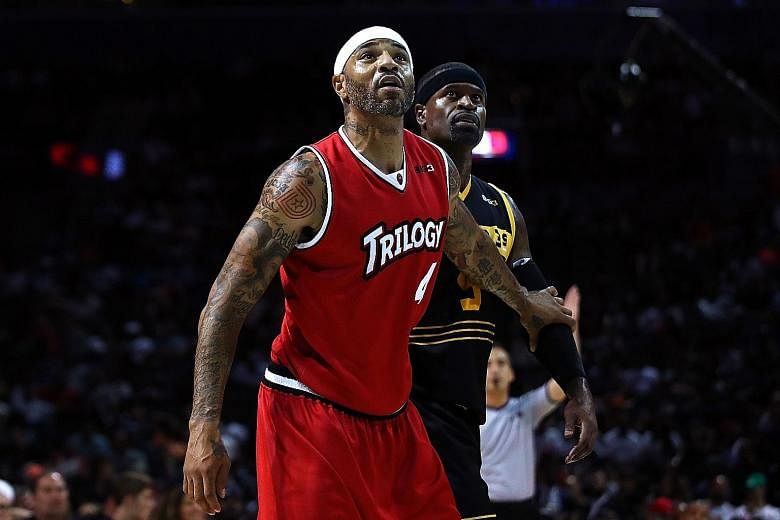Tattoos may permanently alter the physiology of skin in ways that affect sweating.
According to a small, new study, the amount and saltiness of sweat changes after skin has been dyed, a finding that might have implications for athletes who ink large swathes of their bodies, and maybe even for those of us who sport one or two discreet tattoos.
Tattoos are decorative, often metaphoric, sometimes regrettable, but always injurious.
To create a tattoo, the artist punctures the skin with dye-filled needles at a rate of up to 3,000 times per minute. The dye is injected into the skin's dermal layer, which is also where most sweat glands are.
The body recognises these injections as abnormal. They have slightly damaged the tissue and left behind a foreign substance, the ink.
So the immune system gears up, sending a variety of cells to the site of the inking. Some cells carry off tiny amounts of the ink, primarily to the lymph nodes, where it dissipates. Other immune cells merge with the remaining ink, so that both become long-term residents of that portion of the skin. Still other cells initiate an inflammatory response, helping the injured tissue to mend, which it usually does within a few weeks.
As anyone who watches sports knows, tattoos are popular with athletes.
But no one had studied whether tattoos might, in any way, affect the physiology of the skin and, in particular, the operation of the sweat glands. That possibility matters, since normal, healthy sweat glands are important for athletes (and everyone else). We cool our bodies in large part through sweating. Sweating also releases sodium and other electrolytes.
So recently, Dr Maurie Luetkemeier, a professor of integrative physiology and health science at Alma College in Alma, Michigan, and two of his undergraduate students, Mr Joe Hanisko and Mr Kyle Aho, decided to look closely at how tattooed skin sweats.
For their study, which was published recently in Medicine & Science in Sports & Exercise, they began by recruiting 10 healthy, young men with a tattoo on one side of their upper bodies. That tattoo had to be matched by an equal amount of untattooed skin on the other side. In other words, a heart, dragon or John Deere cap on the right shoulder would be balanced by untattooed skin at the same location on the left shoulder. Some of these tattoos were recent; others were three or four years old.
The researchers then applied small chemical patches to both the tattooed and untattooed skin. These patches contained pilocarpine nitrate, a substance that initiates sweating. (It is commonly used to test for cystic fibrosis.)
Immediately after the skin had been exposed to the pilocarpine, the scientists swopped the patches for small spiral-shaped discs designed to absorb the resulting perspiration. The volunteers wore these discs for 20 minutes, while their skin obediently sweated.
It did not sweat evenly on each side however, the scientists soon discovered, after they removed, weighed and examined the discs.
The discs that had been situated above the tattooed skin were much lighter, it turned out. Each man's tattooed skin had produced barely half as much sweat as his untinted skin.
The composition of this sweat was also different, the scientists found. The perspiration from the tattooed skin contained nearly twice as much sodium as sweat from the corresponding, untattooed side.
The results were the same, whatever the age of the tattoo. Older tattoos altered sweating in the same way as newer tattoos did.
That finding suggests that the underlying cause of the shift in sweat probably involves permanent changes within the skin after tattooing, Dr Luetkemeier said.
Perhaps bits of the remaining dye block some of the sweat glands. But more probably, he said, lingering inflammatory cells change the chemical environment within that area of the skin in ways that slow the response of the glands and affect how much sodium is incorporated from nearby cells into the sweat.
Of course, this was a very small study and involved chemically induced perspiration. The men were not exercising to create body heat and sweat. They also were not women or elderly. Dr Luetkemeier and his students plan to study more expansive groups of volunteers in more real-world situations soon.
Perhaps most important, the study does not indicate that those of us with tattoos should sweat too much about our lack of sweat, Dr Luetkemeier said. It is "unlikely", he said, that tattoos would impede perspiration enough to contribute to overheating or other problems in most people, even during exercise.
In other situations, he said, "such as where someone has been severely burned" and lost the sweat glands in the affected skin, "the body compensates" by increasing sweating from uninjured skin.
NYTIMES

